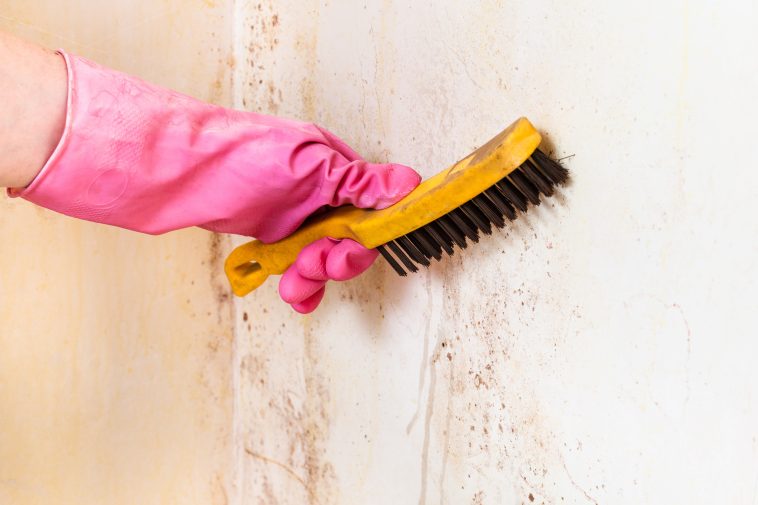Mold is a hazardous substance that can have drastic effects on the health of you and your loved ones. Around 70% of homes have mold present in them. Those that have breathing problems, allergies, and asthma are more susceptible to the harmful side effects of mold.
While some mold spores are beneficial, like penicillin, others are very destructive. Mold spores look for moist areas of your house where they can feed on organic materials and grow. It’s important to know the signs of mold in a house to protect you and your family.
This guide will discuss the top seven signs that you might have a mold problem. Don’t hesitate to contact a mold services company if you believe you have mold. Acting quickly will prevent more serious issues from occurring.
1. Musty Smells
A stale odor is one of the first signs that you might have mold in your home. The smell will start off being faint but get stronger in intensity over time.
Mold releases volatile organic compounds (VOCs) as it grows. These microscopic spores include unpleasant chemicals, such as:
- Terpenes
- Carboxylic acids
- Benzenes
- Aldehydes
As these substances mix, they produce unpleasant odors that smell earthy, damp, or stale. This aroma might be similar to others that you experience in your home. If you begin to notice a smell that doesn’t have an obvious source, like household garbage, you might have mold growing somewhere in your house.
2. You Can See the Mold
A clear indicator that you have a mold problem is if you can see it. There are more than 100,000 different mold species. Unfortunately, this means that mold can come in many textures, shapes, and colors.
Some of the color molds can include:
- White
- Green
- Gray
- Blue
- Pink
- Purple
Mold’s texture can be slimy, powdery, or velvety. There are multiple places in your home that you should regularly check for mold growth, such as your:
- Basement
- Attic
- Crawlspace
- Carpeting
- Window sills
- Door frames
Mold can also grow inside your walls or behind wallpaper. It can also accumulate on physical items in your house, like clothing or furniture.
3. Worse Allergies and Asthma Symptoms Inside
People with allergies and asthma frequently get triggered by mold. Symptoms that get worse include:
- Nasal congestion
- Sneezing
- Chest tightness
- Shortness of breath
- Dry skin
- Itchy, red, or watery eyes
You might be dealing with mold if any of the above symptoms get worse when you go inside. Unpleasant side effects might get worse in specific areas of your home, like your bathroom, attic, or closet. If this is the case, you may have to go to certifiedmoldremoval.com to learn about their mold remediation services.
There are other more serious side effects you might start feeling if you’re exposed to mold. Exposure to toxins from certain kinds of mold can contribute to sick-building syndrome (SBS). SBS is a medical condition that’s connected to poor indoor air quality.
SBS comes with many symptoms. The most common ones are headaches and fatigue.
4. Your Shower Grout Is Dark
If your shower grout is dark, it’s likely caused by mold. On the plus side, it’s usually mold that’s harmless.
However, if you recently had a leak in your bathroom plumbing or a nearby room flooded, you might be dealing with toxic mold.
Professional companies will need to come in and test the mold. They can determine what type of mold it is and if more drastic steps need to be taken.
5. Dark Stains on Your Ceilings and Walls
Mold growth on your walls or ceilings can look like dark-colored patches or stains. These spots can come in many colors, including:
- Brown
- Black
- Yellow
- Green
- Blue
The first thing you should do is inspect the stain on your wall. Mold has a slimy and soft texture that you can smear easily.
You can also dab the stain with a couple of drops of bleach that’s been diluted. If the stain starts to lighten after a few minutes, it’s likely mold. The stain might be caused by something else if it doesn’t change after the bleach application.
A mold patch will typically appear on a surface that’s been damaged by water. This can be challenging to diagnose. The cause of the water damage might be within, underneath, or behind your walls.
6. Peeling Paint or Wallpaper
Wallpaper or paint that’s started to bubble could indicate that you didn’t properly prep your walls before starting on your project. It could also mean that your paint job is old or the painter didn’t use the best methods.
However, another cause of peeling wallpaper or paint could be that there’s moisture in your walls. When there’s enough moisture in the wall where the paint starts to bubble, it’ll typically show up at the bottom of the wall.
Bubbling can also happen on the wall’s baseboard. You might notice large chunks of hidden mold once you remove your baseboard.
7. Your Pet Is Acting Strange
Mold exposure might take the form of unusual pet illnesses or behavior. Your pets can get affected by breathing in mold spores just like humans can.
For example, dogs are more likely to sniff in areas where there’s mold. They might accidentally ingest mold.
Pets can be more sensitive to indoor mold than humans can. That’s because they’re smaller and have different immune systems. Some of the symptoms your pet might start exhibiting include:
- Wheezing
- Coughing
- Vomiting
- Labored breathing
- Decreased appetite
- Lethargy
- Itching
- Hair loss
Don’t hesitate to reach out to your vet if your pet starts behaving unusually.
Look for These Common Signs of Mold in a House
Knowing the top signs of mold in a house is important for protecting the health and safety of whoever lives in your home. Not acting on mold infestation right away can have harmful effects. Prevent future health problems by contacting a professional mold remediation company right away.
Did you find this information useful? We have a large collection of articles about how to best take care of your home. Explore one of our other blogs today.




